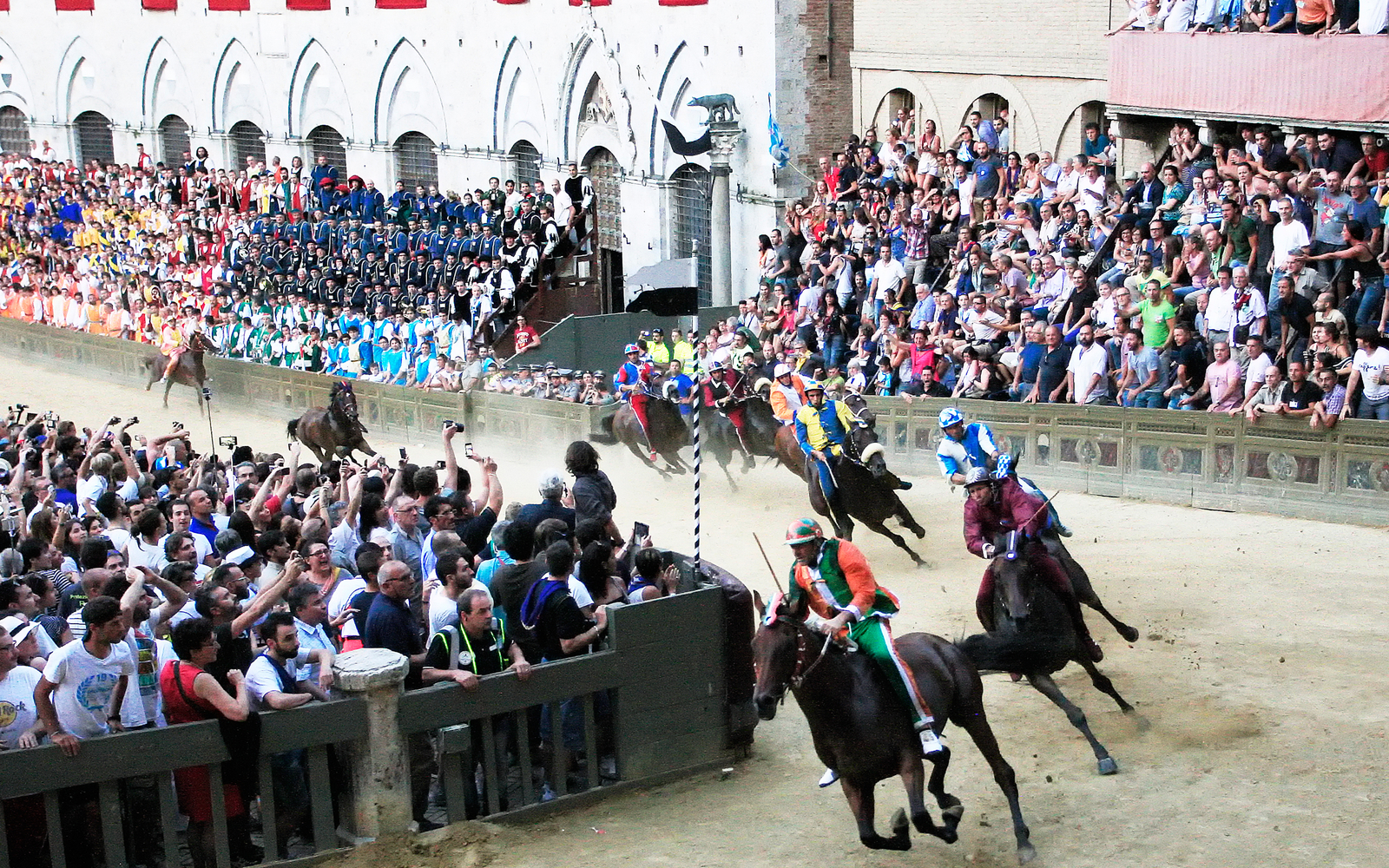
Every year, the picturesque Tuscan town of Siena—generally known for its medieval tower and graphic white-and-black cathedral—turns into an explosive scene as it hosts two major horse races, known as the Palio. It’s a tradition that dates to the 6th century—and though the races take place July 2 and August 16 every year, this is no standard-issue sporting competition. Siena’s 17 districts, known as “contrade,” are all pitting themselves against each other to claim dominance, and historical bragging rights, in this annual competition.
The rivalries—and camaraderie—go deep. In Siena, you’re born into a contrada, which is the community that shapes your life. With centuries of the competition underway, it’s hard to convey just how deeply the residents care about the Palio and its outcome (it’s as if your beloved sports team competed only twice a year).
Ultimately, only 10 horses and contrade compete, via lottery, on a clay track laid down in the Piazza del Campo, Siena’s main square. Each one has its own emblem (like Eagle, Tortoise, Owl, Wave, and Tower) and colors, and in the race, jockeys ride bareback, dressed in their contrada’s colors.
Though the race itself takes place on August 16, several days of festivities, ceremonies and qualifying heats lead up to it. While you’re around town, flags and markers on the street indicate the contrada in which you’re standing; worth keeping in mind as the rivalries get increasingly heated leading up to the race.
The race only lasts about a minute and a half, but the entire day is dedicated to the event. There are ceremonies all day long, but starting around 3 p.m., each contrada performs a blessing ceremony of its horse, followed by a parade of more than 600 participants in historical costume that makes its way through the city.
Shortly after, the horses enter the piazza. When the horses get ready on the starting line, known as the “mossa,” things get tensely quiet. Then, the race is underway.
Perhaps the best parts of the Palio, apart from the main event, are the celebration dinners. Every participating contrada holds communal meals along the streets of their contrada in the week leading to the race, and anyone can join—you can buy tickets from the contrada’s office that day. Sitting outside, eating the regional cuisine and interacting with the contrada’s own members, it’s perhaps the best way to enjoy the spirit of the Palio.